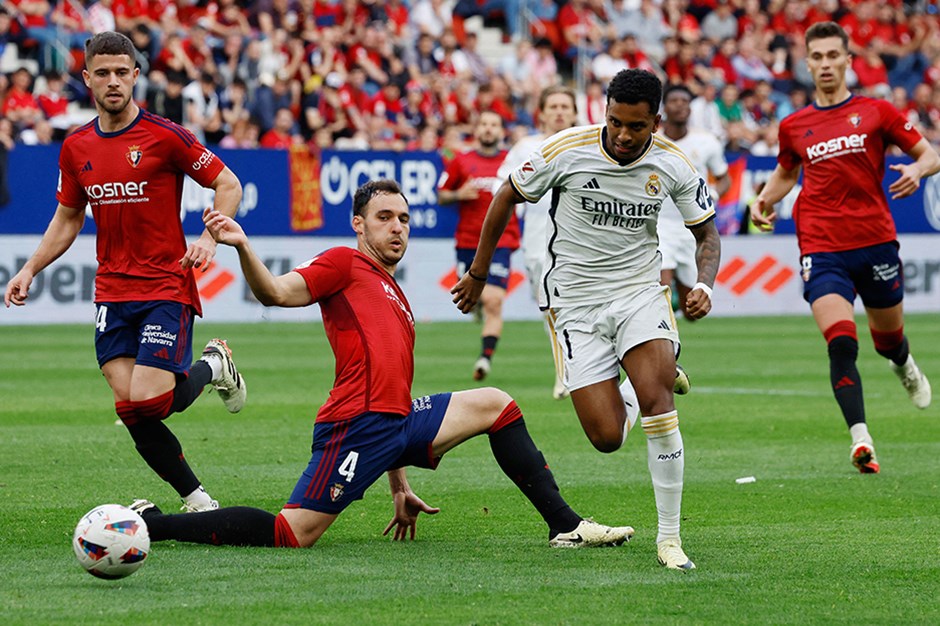Decoding The F1 Drivers' Press Conference: Key Moments And Takeaways

Table of Contents
Analyzing Driver Body Language and Tone
Body language often reveals more than words, providing a powerful subtext to the drivers' carefully constructed responses. Mastering the art of reading between the lines in an F1 Drivers' Press Conference is crucial for a complete understanding.
- Analyzing posture: A confident driver might sit upright with open posture, while a defensive one might hunch or cross their arms. Observe the subtle shifts in posture throughout the conference to gauge their emotional state. Max Verstappen, for instance, often displays a relaxed but assertive posture after a victory.
- Facial expressions: A slight furrow of the brow, a tight smile, or a fleeting look of frustration can betray a driver's true feelings. These micro-expressions, often missed by casual viewers, reveal underlying tensions or satisfaction levels. Lewis Hamilton's facial expressions, for example, are frequently scrutinized for clues about his performance and mindset.
- Tone of voice: A sarcastic inflection, a hesitant response, or an overly enthusiastic declaration can all hint at a driver's underlying intentions. The subtle nuances in tone often reveal whether a driver is being entirely truthful or strategically vague. Charles LeClerc's measured tone often contrasts with his expressive body language, making his press conference appearances particularly fascinating to analyze.
Deciphering Strategic Communication and Team Dynamics
Drivers often employ carefully crafted language to convey messages to rivals and their teams. The F1 Drivers' Press Conference becomes a stage for strategic communication and subtle power plays.
- Subtle digs at competitors: Indirect criticisms and veiled jabs are common tactics. Pay attention to carefully worded phrases that might hint at dissatisfaction with a rival's driving style or perceived unfair advantage.
- Team unity or internal conflict: The level of harmony (or lack thereof) within a team can often be discerned through the drivers' interactions and comments. Observe whether they support each other's statements or subtly contradict one another.
- Strategic reveals: Drivers might strategically reveal or withhold information about car performance, upcoming race strategies, or technical issues. Analyzing their comments can offer insights into their team's overall approach and expectations.
Understanding the Context: Race Results and Championship Implications
The F1 Drivers' Press Conference is heavily influenced by the preceding race's outcome. The context shapes the drivers' demeanor, responses, and overall communication strategy.
- Impact of a strong or weak race performance: A driver who has secured a podium finish will likely exhibit a more confident and relaxed demeanor than one who has experienced a disappointing race.
- Discussion of championship standings: The implications of their current championship position significantly influence their responses. Drivers vying for the championship title often display heightened tension and strategic caution in their responses.
- Analysis of the pressure and stress: The pressure associated with high-stakes racing significantly impacts the drivers' behavior and answers. Observing these pressures reveals the immense strain of competing at the pinnacle of motorsport.
Identifying Key Themes and Emerging Narratives
F1 press conferences often reveal broader themes within the sport beyond individual driver performances. These provide a more holistic understanding of the F1 landscape.
- Recurring topics: Rule changes, technological advancements, and controversies frequently surface as major themes. Analyzing these discussions unveils the major talking points within the sport.
- Evolution of driver relationships: The dynamic between drivers and their relationships can shift and evolve throughout a season. Observing this evolution provides a compelling narrative arc across the season's press conferences.
- Public perception and media impact: The drivers' awareness of public perception and media scrutiny is evident in their responses. Understanding this allows us to interpret their comments within the broader media context.
Conclusion
Successfully decoding the F1 Drivers' Press Conference requires meticulous observation of various elements. By understanding driver body language, strategic communication, the context of race results, and emerging narratives, you can gain a deeper appreciation for the sport beyond the track. Mastering the art of interpreting these press conferences will significantly enhance your enjoyment and understanding of Formula 1. Keep an eye out for future articles where we continue to decode the intricacies of the F1 Drivers' Press Conference and uncover the hidden stories behind the words. Learn to master the nuances of the F1 Drivers' Press Conference, and you'll gain a whole new level of appreciation for this high-stakes world!

Featured Posts
-
 Paris Roubaix Bottle Throwing Spectator Surrenders To Police
May 26, 2025
Paris Roubaix Bottle Throwing Spectator Surrenders To Police
May 26, 2025 -
 Real Madrid In Doert Yildizina Uefa Dan Sorusturma Son Durum
May 26, 2025
Real Madrid In Doert Yildizina Uefa Dan Sorusturma Son Durum
May 26, 2025 -
 Finding Joy After Loss Jonathan Peretzs Emotional Journey
May 26, 2025
Finding Joy After Loss Jonathan Peretzs Emotional Journey
May 26, 2025 -
 Nvidias Rtx 5060 Launch A Warning For Gamers And Reviewers
May 26, 2025
Nvidias Rtx 5060 Launch A Warning For Gamers And Reviewers
May 26, 2025 -
 Bundesliga Hsvs Aufstiegskampf Hafengeburtstag Und Konzert Stimmung
May 26, 2025
Bundesliga Hsvs Aufstiegskampf Hafengeburtstag Und Konzert Stimmung
May 26, 2025
